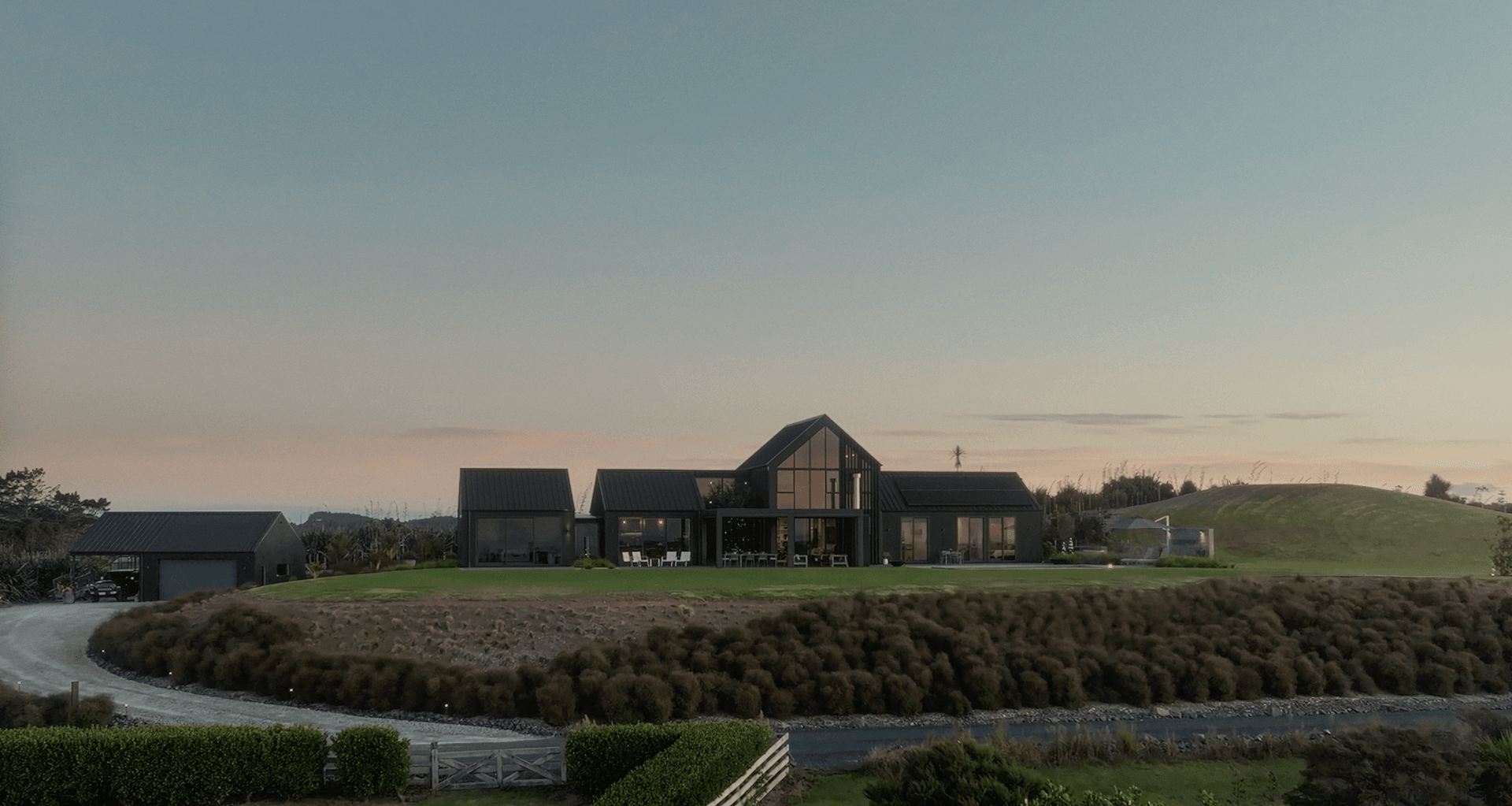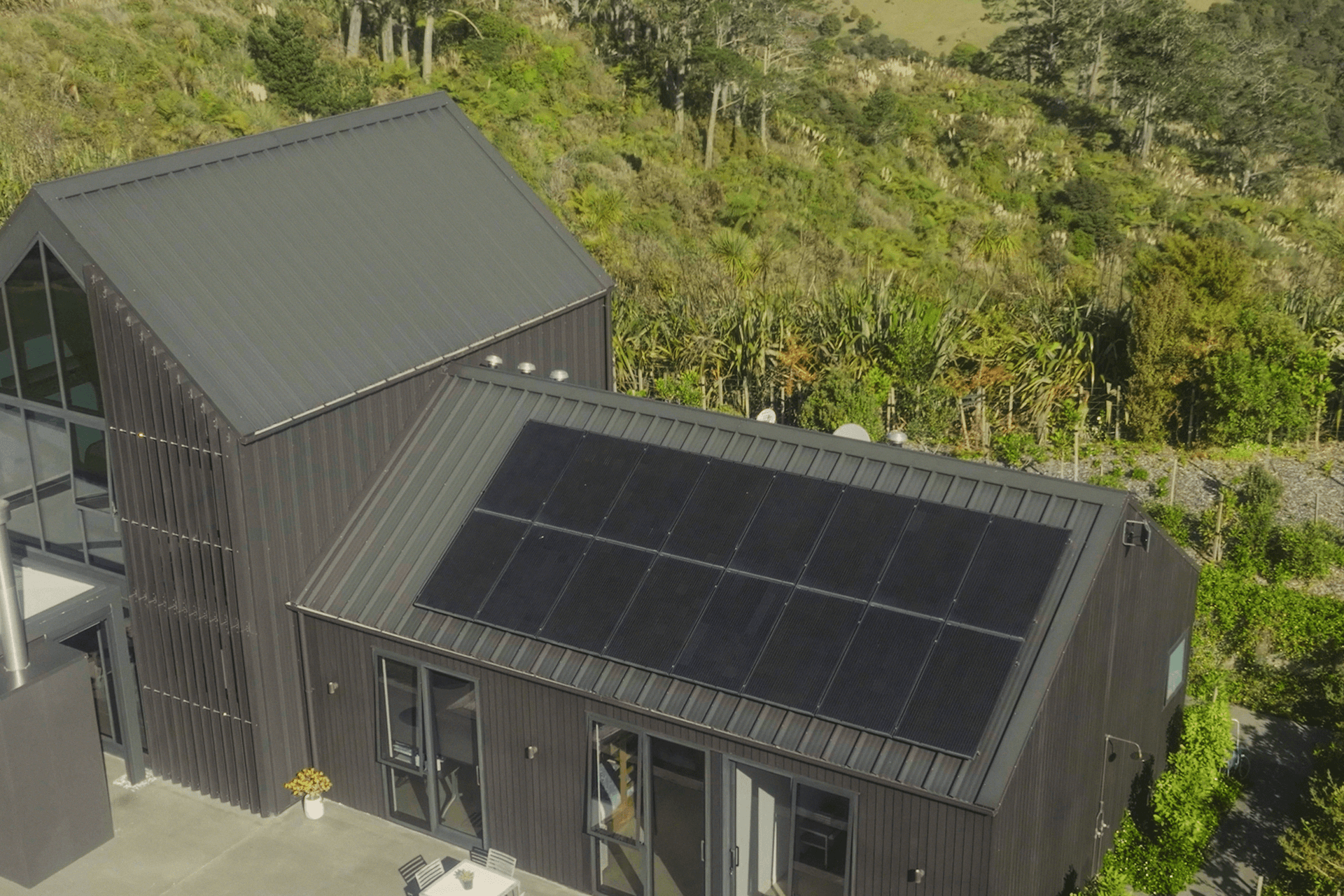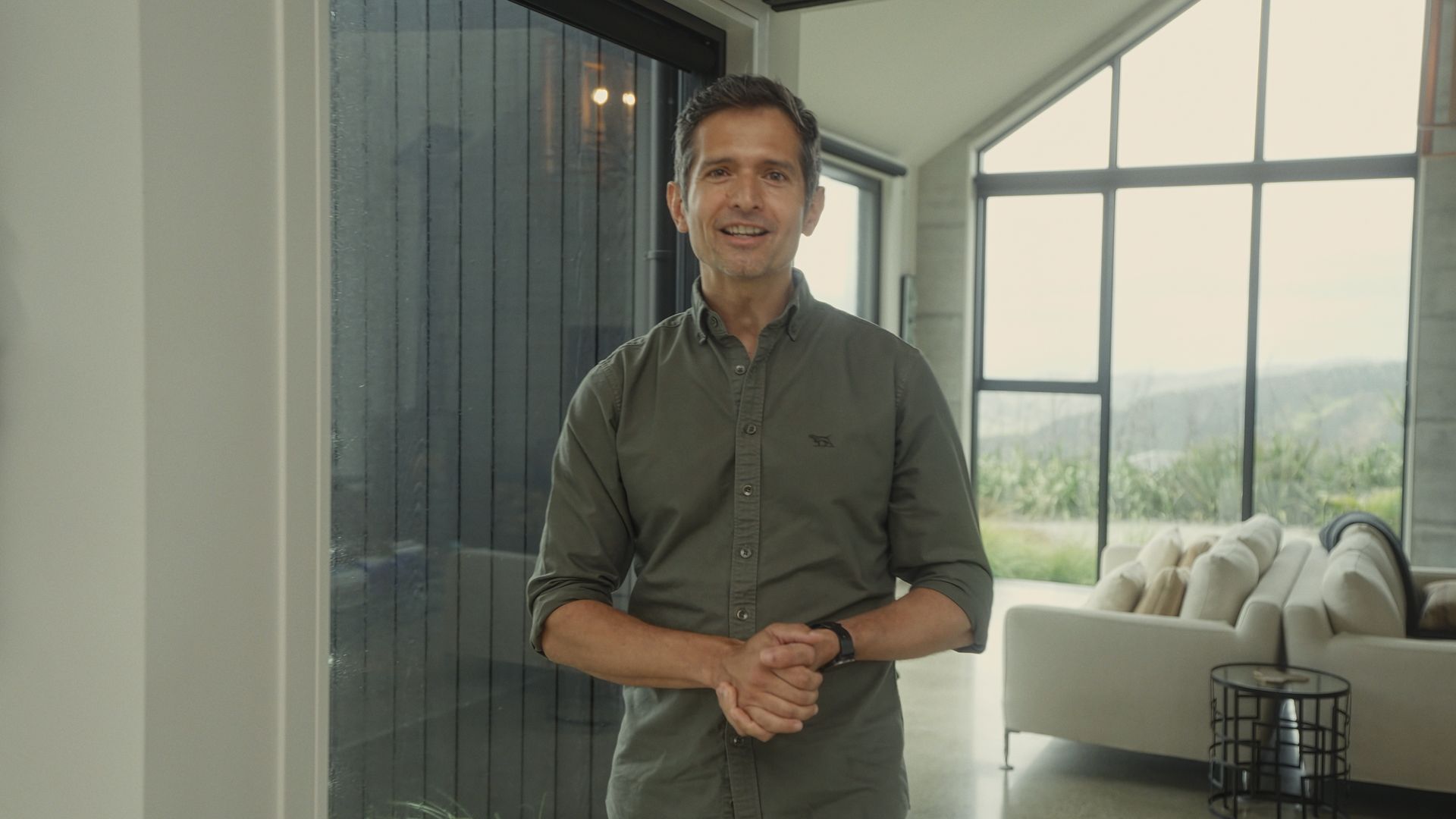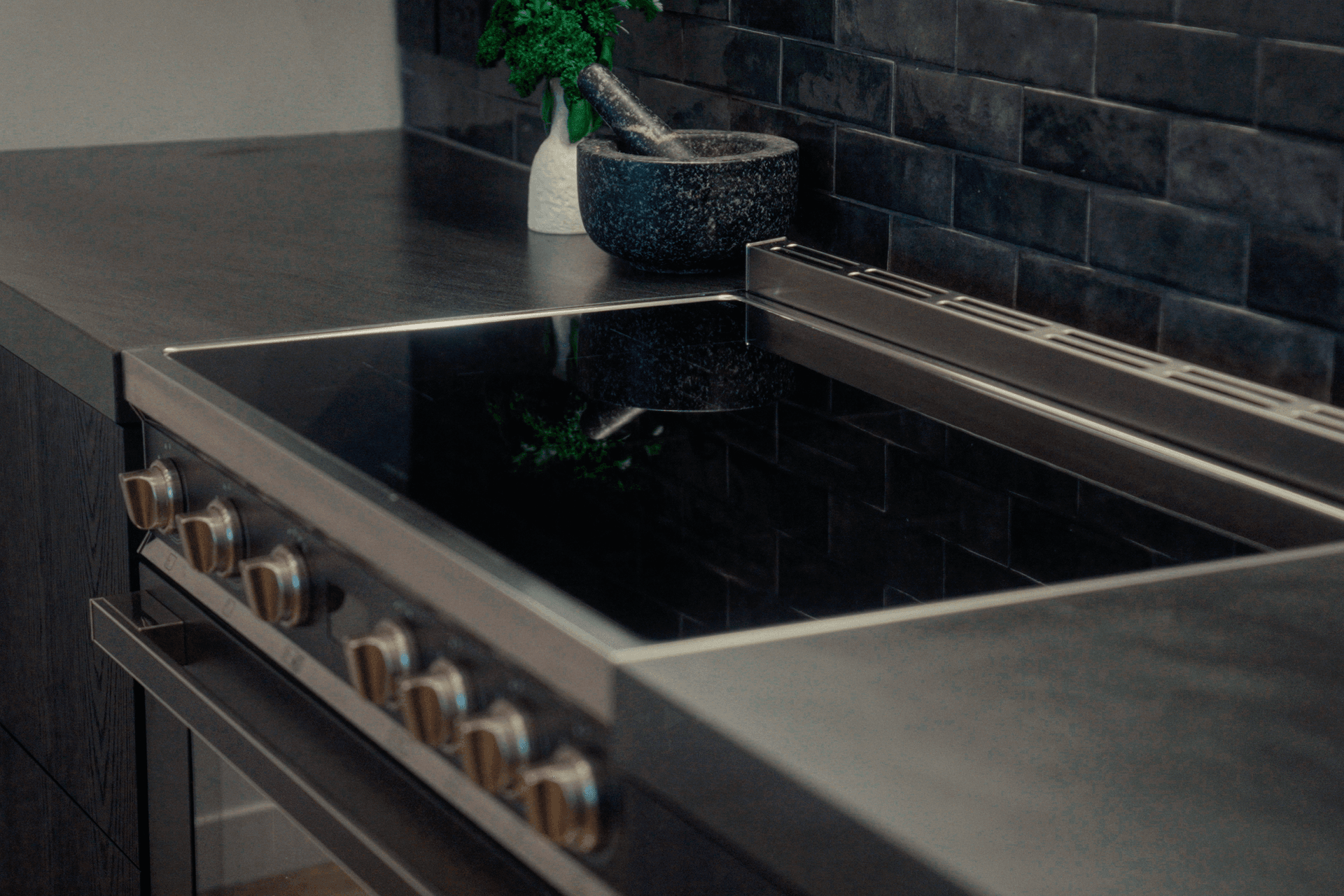Beyond the grid, within paradise — Exploring the energy-efficient intent of a Pākiri home with Gen Less
Written by
11 May 2025
•
4 min read

In partnership with Gen Less, we explore a few of the key features that make this magnificent home a leading example of energy-efficient design, an inspiration for future homeowners and architects for years to come.
A core of seamless solar power
This home by AO Architecture champions energy efficiency through its defining feature; a seamlessly integrated solar power system. Situated at the highest point of its surroundings, it’s ideally placed to take advantage of the sun-drenched site. The gabled roof of its barn-like structure also provides the roof pitch required for optimal solar performance, an important factor that often surprises people learning about this technology for the first time.
This system is supported by a sophisticated solar battery and smart energy management, prioritising energy use when and where it’s needed most. Combined with the home’s orientation, which maximises passive solar gain in winter and prevents overheating in the summer, its holistic and thoughtful approach has set it up for success.

In their infancy, solar panels were seen as purely functional additions, bolted on with little regard for appearance or design. However, as this Pākiri home demonstrates with its sleek solar solutions that blend beautifully with its dark profiled metal roofing, a refined result is more than possible. Design-centric influences have led to solar becoming akin to a material choice like timber or stone finishes, considered with intent at the start of a project and seen as an extension of an architect’s vision.
Rooftop solar is one of the cleanest and cheapest sources of energy in New Zealand, with zero emissions. According to GenLess, when you include the upfront costs, electricity from rooftop solar works out about 75% cheaper than electricity purchased from the grid over a 30-year lifespan.
Using the Gen Less Solar Power Calculator, you can model how much energy your home could generate and see whether it’s the right choice for you.

The comfort and cost-effectiveness of heat pumps
Heating homes has always been a challenge in New Zealand, given our climate, the prevalence of poorly insulated homes and heating solutions that aren’t always the most efficient or environmentally friendly.
The advent of the heat pump has had a drastic impact on this, both here and abroad, offering a cost-effective and efficient way to provide temperature stability in homes throughout the year. Compared to often bulky and intrusive alternatives, modern heat pumps offer design-led comfort, providing 3–5 times the heating for the same amount of input energy as gas heaters.
This is, in no small part, the reason behind the incorporation of heat pumps at Pākiri. With careful placement and sizing (critical factors for efficient performance), heat pumps were chosen as the perfect heating solutions for the contemporary styled interiors.
With the ability to align the heat pump's finish to the material palette of the home, the interior’s cohesive styling was not compromised, but rather, enhanced in harmony with the overall aesthetic.
This meant the homeowners didn’t have to choose between energy efficiency and visual appeal. They achieved both for a beautifully comfortable living environment.
The Gen Less efficient appliance calculator allows you to quickly compare different models of heat pumps, including their efficiency ratings and annual running costs. If you’re considering switching to a heat pump from a different heating system, you can calculate potential savings for your home using the Gen Less home energy savings calculator.

Personifying efficiency and design with induction cooktops
No stone was left unturned with the energy-efficient, design-conscious approach pursued in Pākiri, which permeated right down to the choice of kitchen appliances. In this final example, an induction cooktop was preferred due to its superior performance, energy efficiency, and design.
The induction cooktop is, first and foremost, an extremely energy-efficient appliance. Using electromagnetic technology, it transfers energy directly to the cookware, losing no energy to air as gas does. This ultimately means faster boiling, better control and a cooler, more comfortable kitchen environment.

Beyond efficiency, induction cooktops also enhance material choices. Their sleek, uninterrupted surface can sit flush against stone, metal, or timber benchtops, allowing a kitchen’s design language to flow effortlessly. Without the visual clutter of bulky burners or grates, the induction cooktop enables a kitchen to maintain its refined and open look, a space that serves as a focal point of this beautiful yet functional home.
Safe to use, highly responsive and easy to clean, the latest induction cooktops personify the very best in technological innovation, offering better sustainability, improved usability and enhanced designs.
Using the Gen Less home energy savings calculator, you can see how much you’ll save in running costs by switching to energy-efficient appliances like induction cooktops, showing just how much difference these choices can make.
